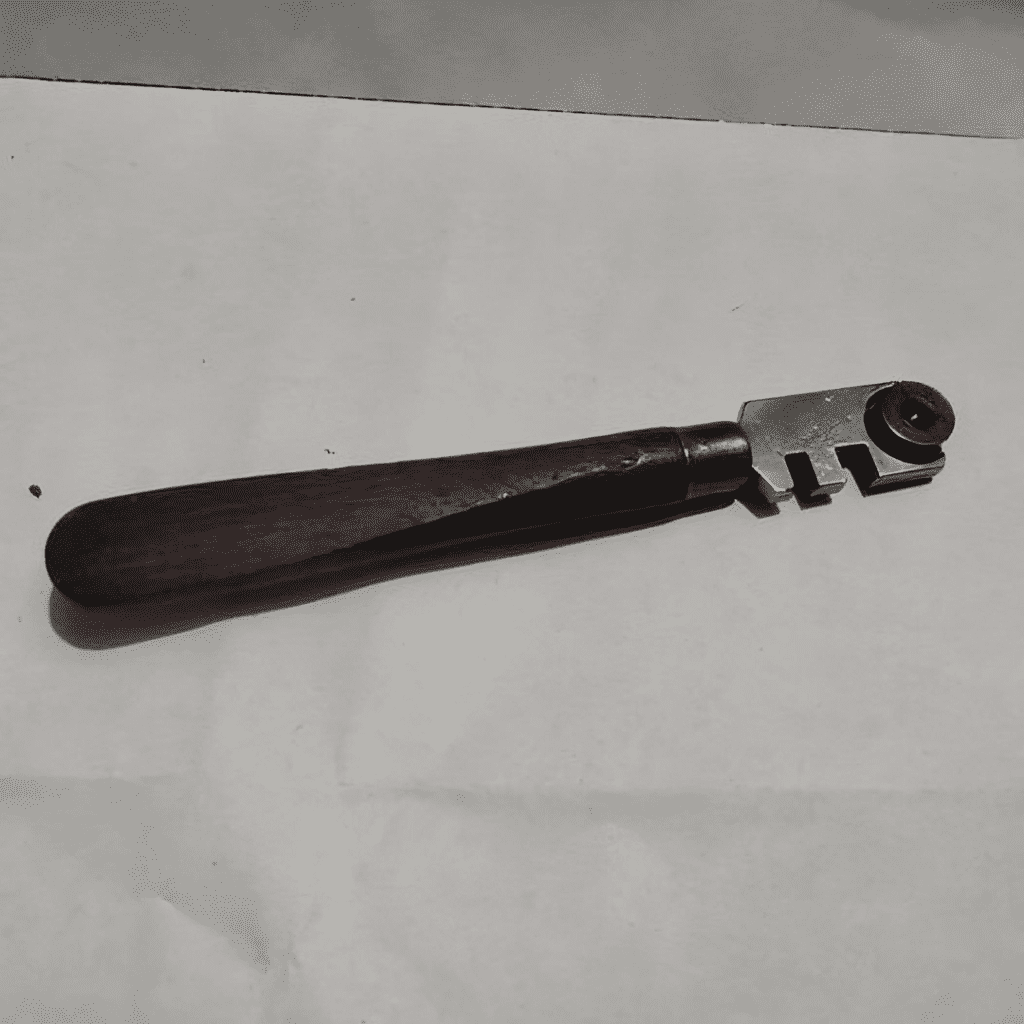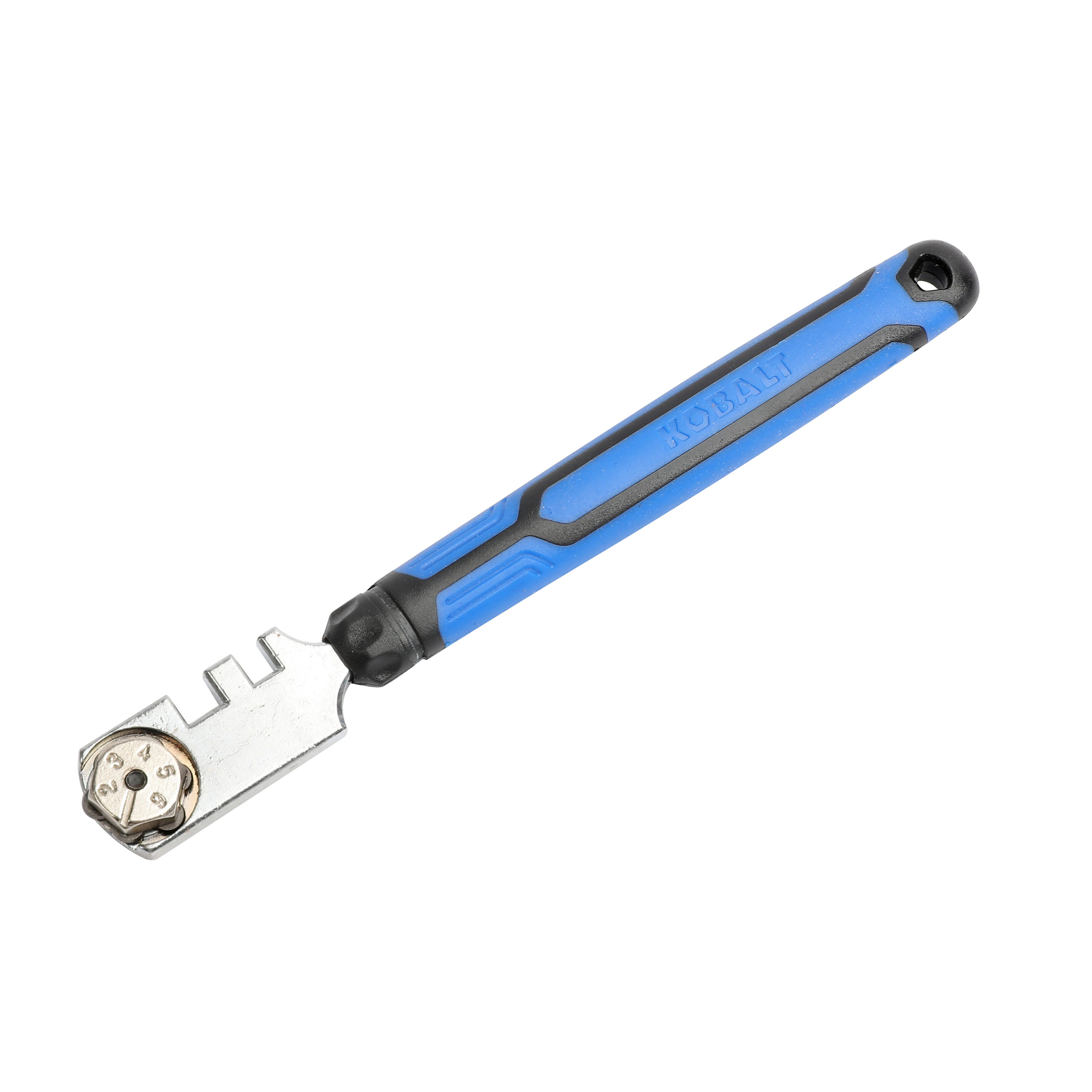The glass cutter, a seemingly simple yet revolutionary tool, holds a fascinating history that stretches back to the early 19th century. Before its invention, glass artisans faced a significant challenge—cutting glass precisely without causing it to shatter. They relied on diamonds or hard metals to score the glass, but this often led to unpredictable cuts and an increased risk of breakage.
That all changed in the mid-1800s with the introduction of the first patented glass cutter featuring a hardened steel wheel. This innovation transformed the glass-cutting industry by offering a tool that allowed for more precise and controlled cuts. Whether for industrial manufacturing or intricate artisan work, this tool made glass cutting more efficient and accessible, laying the foundation for the glassworking techniques we still use today.
How the Glass Cutter Works: A Tool of Precision

The primary function of a glass cutter is simple yet effective: it scores the surface of the glass, creating a controlled fracture line that can then be cleanly snapped. The beauty of this tool lies in its simplicity and precision, making it indispensable in various fields, from stained glass artistry to industrial glass fabrication.
Here’s a step-by-step guide to using this vintage tool:
- Preparation: Before you start, ensure the glass surface is clean and free from any debris. Place the glass on a flat, stable surface to prevent unwanted movement while cutting.
- Marking: Using a ruler or straight edge, mark the desired cutting line on the glass. A grease pencil or marker works well for this, ensuring an accurate guideline.
- Scoring: Hold the glass cutter firmly and align the cutting wheel along the marked line. Apply even pressure as you drag the cutter across the glass surface, making sure to score in a single, continuous motion. You’ll hear a faint “scratching” sound—this is the sound of success.
- Breaking: Once the glass is scored, position the scored line over the edge of your work surface. Apply gentle pressure to both sides of the line to snap the glass cleanly along the scored mark. Alternatively, a snapping tool can be used for added precision in breaking the glass.
The ergonomic handle and precision wheel of a glass cutter make it perfect for achieving both delicate, intricate cuts and larger, industrial-sized scores. Its versatility has made it a vital tool for artisans, glaziers, and DIY enthusiasts alike.
The Legacy of the Glass Cutter: Craftsmanship and Innovation
The vintage glass cutter represents more than just a functional tool—it symbolizes craftsmanship, innovation, and industrial progress. Its invention revolutionized glasswork, allowing artists and tradespeople to achieve cleaner, more reliable cuts with less breakage. The precision and control it offered meant that even the most intricate designs, such as those found in stained glass windows, could be realized with ease.
The impact of the glass cutter on the world of stained glass art is particularly profound. Stained glass artisans depend on the glass cutter’s accuracy to create the elaborate designs that adorn everything from grand cathedrals to decorative home pieces. By giving them the ability to execute delicate, complex cuts, the glass cutter became a cornerstone of the craft.
The industrial world also embraced this tool, using it for large-scale glass production in manufacturing and construction. From glass windows to intricate mirrors, the glass cutter has played a pivotal role in shaping our environments—both literally and figuratively.
Why Collectors Value Vintage Glass Cutters
As with many well-crafted tools, the vintage glass cutter has become a sought-after item for collectors and enthusiasts. These tools, often featuring wooden handles and brass fittings, are prized not just for their functionality but also for their aesthetic appeal and historical significance.
Collectors appreciate these tools as artifacts that tell the story of an evolving craft. The fact that many of these vintage glass cutters still work perfectly today is a testament to their superior craftsmanship. In an era where many tools are mass-produced, the vintage glass cutter stands out as a reminder of a time when attention to detail and durability were paramount.
Additionally, these tools often carry a certain nostalgic charm—they are tangible pieces of industrial history, representing the era when manual labor and skill were at the heart of craftsmanship. Many collectors enjoy displaying them as part of a larger collection of vintage tools or using them in restoration projects that honor traditional methods.
The Enduring Appeal of the Manual Glass Cutter

Despite advances in technology, including automated and laser-based glass-cutting machines, the manual glass cutter continues to hold a special place in the world of glassworking. Its enduring appeal lies in its simplicity, reliability, and precision. For artisans and professionals who value the tactile experience of creating something by hand, the manual glass cutter remains an essential tool.
Modern glass cutters may come with enhancements such as replaceable cutting heads or self-lubricating mechanisms, but the basic design has remained largely unchanged since its invention in the 19th century. This speaks to the ingenuity and practicality of the original design—a tool so well-conceived that it has stood the test of time.
For hobbyists and DIY enthusiasts, the glass cutter offers a satisfying hands-on experience. Whether crafting a stained glass window or cutting a pane of glass for a home project, there’s something rewarding about using a tool that has such a direct impact on the material.
Looking to the Future: The Glass Cutter’s Place in Modern Craftsmanship
As we move further into the digital age, where automation increasingly dominates manufacturing and craftsmanship, the glass cutter serves as a bridge between the past and present. It remains an essential tool not just for its practicality, but also for its role in preserving the art of manual glass cutting.
The principles behind the vintage glass cutter have influenced the development of modern glass-cutting technology. Yet, even as new machines are introduced, the fundamental design of the original cutter remains a blueprint for its successors. This speaks to its timeless functionality and enduring relevance.
Conclusion: A Tool That Stands the Test of Time
The vintage glass cutter is far more than a simple hand tool; it’s a reflection of craftsmanship, innovation, and industrial evolution. Its ability to deliver precise and controlled cuts has made it an indispensable part of the glassworking industry for over a century. As we continue to explore new technologies and methods, the vintage glass cutter remains a cherished link between the skilled hands of the past and the creative minds of the future.
Whether used by professionals in industrial applications or by artisans creating delicate glassworks, the glass cutter’s legacy endures. It is a tool that honors the tradition of manual skill while continuing to play a vital role in modern craftsmanship.



